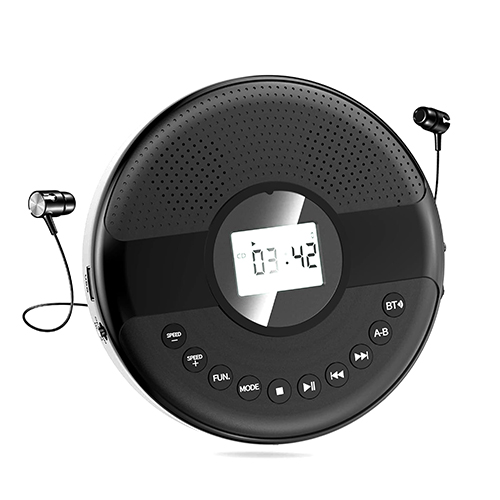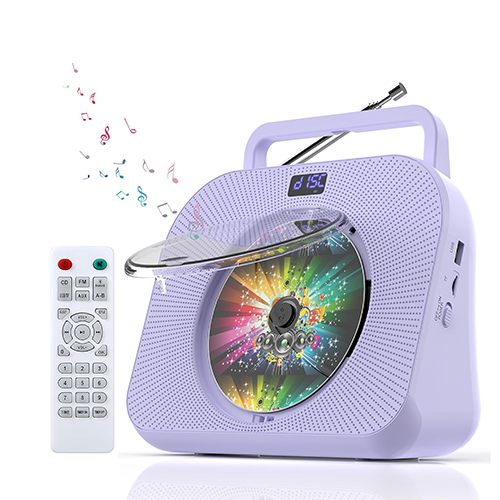Many people have portable CD players at home. Sometimes, because they're busy or have upgraded to a new device, they leave them unused for extended periods. However, when they finally try to play, they often find that it won't turn on or won't read discs. This is often caused by improper maintenance during storage.

Whether you're using dry or rechargeable batteries, it's crucial to remove the batteries from your portable CD player before storing it for an extended period. This is an often overlooked but crucial step. Dry batteries leak over time. The electrolyte inside is corrosive. Once leaked, it can flow through the battery compartment into the player's interior, corroding the circuit boards and metal contacts, making repair difficult. After removing the batteries, it's best to wipe the battery compartment with a clean, soft cloth. If there's any dust inside, clean it out as well. Then, secure the battery compartment lid to prevent dust from entering.
The portable CD player's body and internal components are sensitive to moisture and heat, so they must be stored in a dry, cool, and dark place. Avoid humid areas like balconies and bathrooms, or high-temperature areas like near radiators or in car trunks. Humid environments can cause rust on the metal components within the player and mold on the laser head, impairing its ability to read discs. High temperatures can also cause the plastic body to warp and degrade the wires and capacitors. It's best to find a sealed box, such as a storage box, and place one or two packets of desiccant inside. Place the CD player inside and then place the box on the top shelf of a closet or bookshelf to protect it from moisture and direct sunlight. If a sealed box isn't available, wrap the player in a clean plastic bag and then a soft cloth. The key is to isolate it from moisture and heat.
The laser head is the most delicate component of a portable CD player. Dust easily accumulates after prolonged use, which can affect disc reading and, in severe cases, damage the laser head. Therefore, be sure to clean the laser head briefly before storage without disassembling the player. To clean the player, place a cleaning disc in the player, press play, and let it spin for a few minutes. The brush on the cleaning disc will remove dust from the laser head. Then remove the cleaning disc to keep the laser head clean.

Even if you don't use your portable CD player for a long time, it's recommended to power it on every 3-6 months and play for a few minutes. It doesn't need to be too long; 10-15 minutes is enough. This allows the internal components, such as the capacitors and motor, to circulate and prevent aging and oxidation caused by prolonged idle time. If the capacitors are not powered for a long time, their capacity will decrease, resulting in unstable power supply and a possible freeze. While the player is powered on, play a CD you frequently listen to. Check the buttons and volume control for any issues. If you notice any lag or unresponsiveness, take simple measures, such as pressing a button a few times to allow the contacts to connect smoothly.
Before storing it, clean the exterior. Use a dry, soft cloth, such as an eyeglass cleaning cloth, to gently wipe the exterior, buttons, and display to remove any dust or fingerprints. Avoid allowing moisture to accumulate on the exterior to prevent oxidation and paint loss. Pay special attention to the gaps between buttons and connectors, as these areas are prone to dust accumulation and can cause buttons to stick or connectors to malfunction.
